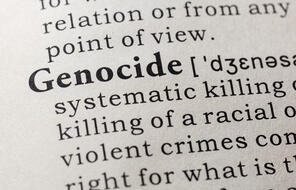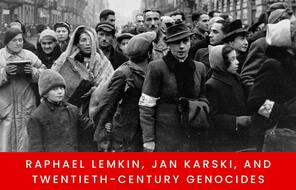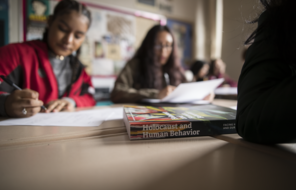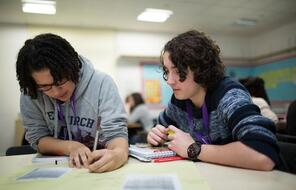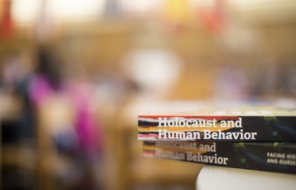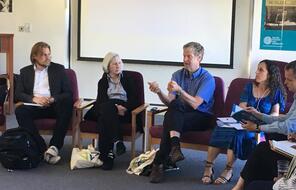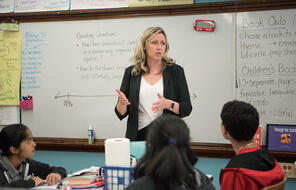
8 Classroom Resources on Genocide
April is Genocide Awareness Month, a time to reflect and honor the lives lost to genocide. As we commemorate atrocities of the past, we also recognize the role education can play in raising awareness and working toward prevention today and in the future.
While the term genocide was first introduced after the Holocaust in 1949, charges of genocide and genocidal intent continue to arise from conflicts that are regularly headline news. Even amid ongoing wars and persecution, the legal bar for establishing genocidal intent is difficult to meet, and establishing international consensus about whether genocide is taking place has proven difficult
As we sit with the strong emotions that investigations of genocide elicit, there is also an important opportunity to think critically about the specific historical and contemporary conditions under which genocide has occurred.
Below are 8 classroom resources that educators can use to unite head, heart, and conscience in their instruction on genocides past and present.
Historical Resources
Holocaust and Human Behavior
Holocaust and Human Behavior is a program for middle and high school that engages students and teachers in a study of the Holocaust through the lens of human behavior. Students make the essential connection between history and themselves. By using the book of readings, primary sources and professional development, teachers take students on a journey through profound questions about human behavior. Originally published 40 years ago, it was updated in 2016 to reflect the latest scholarship on the Holocaust.
Totally Unofficial: Raphael Lemkin and the Genocide Convention
Born in 1900, Raphael Lemkin devoted most of his life to a single goal: making the world understand and recognize a crime so horrific that there was not even a word for it. Lemkin took a step toward his goal in 1944 when he coined the word "genocide." In 1948, the newly formed United Nations used this new word in the Convention on the Prevention and Punishment of the Crime of Genocide, a treaty that was intended to prevent any future genocides. This case study of Raphael Lemkin challenges us to think about what it will take for individuals, groups, and nations to take up Lemkin's challenge.
Teaching Night
This book helps educators lead students through a reading of Night that promotes their literacy skills, deepens their historical understanding of the Holocaust, and fosters social-emotional competencies like empathy. Our guide to the memoir offers classroom-ready activities and a rich collection of media that take students on an exploration of these central questions.
Crimes Against Humanity and Civilization: The Genocide of the Armenians
This series of eight lessons is organized as a mini-unit for teaching the Armenian Genocide.
The Nanjing Atrocities: Crimes of War
The Nanjing Atrocities: Crimes of War details the events unfolding in China and Japan in the years leading up to World War II in East Asia, and the Japanese occupation of the city of Nanjing, China, in 1937. Following our guiding scope and sequence, this resource lays a broad framework and contains an in-depth examination of the war crimes known today as the Nanjing Atrocities.
Contemporary Resources
What Is Genocide?
Since 2022, charges of genocide and genocidal intent have arisen from conflicts that are regularly front page news. Coined as a moral and legal concept and codified as an international crime in the aftermath of World War II and the Holocaust, genocide is considered among the most serious offenses that a government, military, or other organized group can commit. Use this explainer to help students understand the meaning, gravity, and history of the concept and crime of genocide as well as the international laws and organizations that were created to prevent and prosecute it.
The Psychology of Genocidal Behavior
In this video, psychologist James Edward Waller brings a psychological lens to understanding why people commit genocidal acts.
Human Rights in the News
On December 10, 1948, the United Nations adopted the Universal Declaration of Human Rights (UDHR), a historic commitment to universal rights. In this Teaching Idea, students use the UDHR as a framework for understanding both the progress that has been made since 1948 and the areas where we continue to fall short in protecting and promoting human rights. This analysis can inspire and motivate students to dedicate themselves to the cause of human rights worldwide by promoting them in the “small places close to home,” which is where, according to Eleanor Roosevelt, they begin.

